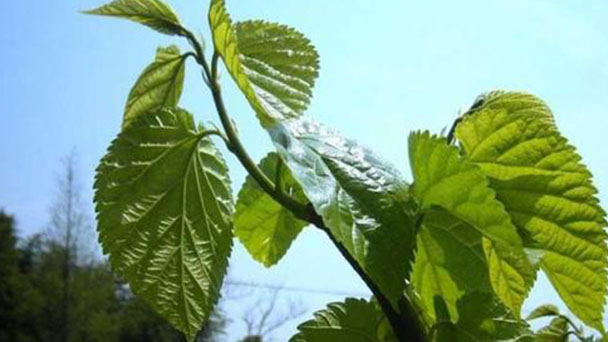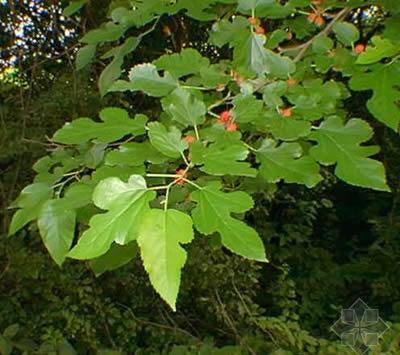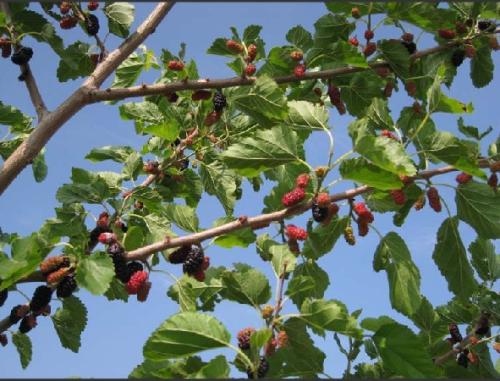How to Grow and Care for Mulberry
Written by Maggie
Dec 06 2022

One of the most interesting things I remember as a child was raising silkworms. Every time at the end of spring early summer season, the family will pick a lot of tender green mulberry leaves in the home, used to feed silkworm babies. But the purpose of Mulberry is more than that. It's also useful for food and medicine.To grow a fruitful Mulberry could take years.

How to Grow Mulberry
1. Planting Time
Generally choosing to plant in winter and early spring, the earth temperature had better be stable at 10-12℃ or so.
2. Planting Preparation
Select Mulberry seedlings with good quality and free from pests and diseases; Prepare a suitable container for the mulberry pot. It is best to choose a large pot. Mulberry trees do not have high requirements on soil, so they can use ordinary loose and breathable garden soil. It is better to add some coarse sand particles or cinders to the soil to facilitate water permeability and prevent the soil from hardening. Before planting the mulberry tree, you can add some organic manure to the bottom of the basin as basal fertilizer.
3. Planting Methods
When planting in summer and autumn, attention should be paid to protect the mulberry root system as much as possible. For planting in winter and spring, the overlong taproot should be slightly pruned to promote more lateral roots. Bury the Mulberry seedling in the matrix, lift the soil gently to stretch the roots, and then pat the soil gently to compress the soil. The soil is one layer loose and about 3 cm old, so as to soak the root properly.
4. Planting and Maintenance
It is suitable to put the mulberry pot on the outdoor balcony and other ventilated light; Keep the soil moderately moist, the soil is wet in time when it is dry, and the soil is drained in time when it is rainy; Loose soil weeding can be conducive to the growth of mulberry root; Fertilization adhere to eat more meals, until the germination of mulberry leaves, and we can apply once manure water or urea water fertilizer. Later according to the specific growth situation, appropriately apply fertilization 1-2 times. In addition, special attention should be paid to the control of diseases and insect pests in the cultivation of mulberry trees.

How to Care for Mulberry
1. Choose seedlings: Some Mulberry seedlings were told by old people that they would not produce fruit, so the Mulberry seedlings should be of good quality. If it doesn't blossom and bear fruit, replace it as soon as possible.So as not to waste time and space.
2. Light: The Mulberry is light friendly and hardy, ideally planted on open balconies and rooftops to make it easier to maintain.
3. Land: The Mulberry was highly adaptable to the soil, but it was necessary to reorganize the land before planting the Mulberry. The land was levelled, cleared of debris and ploughed deep.
How to Prune Bonsai Mulberry
1.Training
It was usually carried out during winter hibernation to cut off the dead fist, dead stump, diseased and wormy branches from Mulberry. The cutting mouth should be close to the intersection of branches, and the cutting mouth should be smooth.
2.Shear Pin
Pruning took place during Mulberry's hibernation period. Trim away the disorganized branches of Mulberry. Generally 1.5 meters above branches can be cut to 1/4-1/3, 1.5 meters left and right branches can be cut to 1/5-1/4, 1 meters left and right branches appropriate to cut to 10-15 centimeters.
3. Thin Bud
When the shoots of Mulberry grow to 10-15cm in the same year, the branches should be sparse and densely packed with buds, so that the remaining branches can grow thicker and more leaves. The degree of thinning buds is generally based on soil fertility and tree strength, but the soil can be sparse and retained more.
4. Pick the Core
During the spring silkworm period, the tender core at the top of the new shoots should be removed. The core picking time of Mulberry was usually 10 to 15 days in sunny days before the leaves were used, while that of Mulberry in early middle days was about a week before the leaves were used. Those who use the early leaves should remove the tender core of two leaves, while those who use the late leaves can remove the tender core of one leaf.
The fact that Mulberry likes a warm, wet, sunny environment but is also highly adaptable to climate and soil suggests that its farming methods are not difficult. Mulberry is a resistant plant, so it should be pruned regularly during maintenance.
Latest Updated
- Benefits of Bugleweed - 7 Science-backed Health Benefits
- Bugleweed Dangers & Side Effects - Is It Poisonous?
- How to Plant Evergreen Trees - What You Should Know
- When to Plant Evergreens - Grow Guide for Evergreen Trees
- 12 Wonderful Evergreen Shrubs for Your Garden
- 12 Popular Evergreen Plants with Pictures for Beginners
- When And How To Prune A Lilac Bush Like a Pro
- How to Grow & Care for Lilac Vine (Hardenbergia Violacea)
- Japanese Lilac Tree (Syringa Reticulata) Care & Propagation Guide
- Shumard Oak Pros and Cons - What to Know
Popular Articles
- Winter maintenance of Antirrhinum Majus
- How to Grow Terminalia Mantaly Tree
- How to Grow and Care for Crossostephium Chinense
- How to grow Antirrhinum Majus in spring
- Peristeria Elata (Dove Orchid) Profile: Info & Care Guide
- Underwatered Snake Plant (Sansevieria Trifasciata) - Signs And How To Fix
- How to Care for Brazilian Jasmine Plant (Mandevilla Sanderi)
- How to Grow & Care for Graptopetalum Purple Delight in Summer
- Rosa Chinensis (China Rose): Plant Growing & Care Tips
- How to Care for Baby Sun Rose (Aptenia Cordifolia)